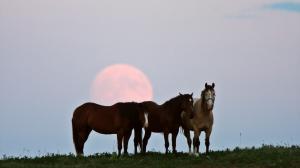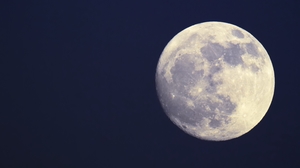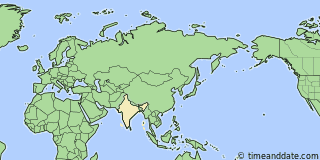| Current Time: | Nov 2, 2025 at 4:40:06 am |
|---|---|
| Moon Direction: | 277.91° W↑ |
| Moon Altitude: | -23.80° |
| Moon Distance: | 230,334 mi |
| Next Full Moon: | Nov 5, 2025, 6:49 pm |
| Next New Moon: | Nov 20, 2025, 12:17 pm |
| Next Moonrise: | Today, 3:27 pm |
Moonrise, Moonset, and Phase Calendar for Jaipur, March 2025
Scroll right to see more
| 2025 | Moonrise/Moonset | Meridian Passing | ||||||||
|---|---|---|---|---|---|---|---|---|---|---|
| Mar | Moonrise | Moonset | Moonrise | Time | Distance (mi) | Illumination | ||||
| 1 | 7:38 am | ↑ (92°) | 8:00 pm | ↑ (272°) | - | 1:45 pm | (62.4°) | 225,057 | 2.5% | |
| 2 | 8:12 am | ↑ (84°) | 9:06 pm | ↑ (280°) | - | 2:35 pm | (69.8°) | 225,025 | 7.8% | |
| 3 | 8:48 am | ↑ (76°) | 10:13 pm | ↑ (288°) | - | 3:27 pm | (76.8°) | 225,967 | 15.7% | |
| 4 | 9:27 am | ↑ (69°) | 11:22 pm | ↑ (294°) | - | 4:21 pm | (82.9°) | 227,695 | 25.6% | |
| 5 | 10:11 am | ↑ (64°) | - | - | 5:18 pm | (87.7°) | 229,990 | 36.7% | ||
| - | 12:30 am | ↑ (299°) | 11:01 am | ↑ (60°) | 6:17 pm | (89.3°) | 232,609 | 48.4% | ||
| 7 | - | 1:37 am | ↑ (302°) | 11:56 am | ↑ (58°) | 7:17 pm | (88.2°) | 235,349 | 59.8% | |
| 8 | - | 2:39 am | ↑ (302°) | 12:56 pm | ↑ (58°) | 8:16 pm | (89.0°) | 238,041 | 70.5% | |
| 9 | - | 3:33 am | ↑ (301°) | 1:59 pm | ↑ (60°) | 9:12 pm | (88.6°) | 240,598 | 79.9% | |
| 10 | - | 4:20 am | ↑ (298°) | 3:01 pm | ↑ (64°) | 10:04 pm | (84.7°) | 242,960 | 87.7% | |
| 11 | - | 5:00 am | ↑ (293°) | 4:00 pm | ↑ (69°) | 10:51 pm | (79.8°) | 245,113 | 93.7% | |
| 12 | - | 5:35 am | ↑ (287°) | 4:57 pm | ↑ (75°) | 11:35 pm | (74.3°) | 247,045 | 97.8% | |
| 13 | - | 6:06 am | ↑ (281°) | 5:52 pm | ↑ (82°) | Moon does not pass the meridian on this day. | ||||
| - | 6:35 am | ↑ (275°) | 6:44 pm | ↑ (89°) | 12:16 am | (68.4°) | 248,743 | 99.8% | ||
| 15 | - | 7:02 am | ↑ (268°) | 7:36 pm | ↑ (95°) | 12:56 am | (62.3°) | 250,168 | 99.7% | |
| 16 | - | 7:29 am | ↑ (261°) | 8:28 pm | ↑ (102°) | 1:36 am | (56.4°) | 251,262 | 97.8% | |
| 17 | - | 7:57 am | ↑ (255°) | 9:21 pm | ↑ (108°) | 2:15 am | (50.7°) | 251,942 | 94.1% | |
| 18 | - | 8:28 am | ↑ (250°) | 10:15 pm | ↑ (113°) | 2:57 am | (45.5°) | 252,112 | 88.7% | |
| 19 | - | 9:02 am | ↑ (245°) | 11:11 pm | ↑ (118°) | 3:41 am | (40.9°) | 251,676 | 81.8% | |
| 20 | - | 9:41 am | ↑ (241°) | - | 4:28 am | (37.3°) | 250,550 | 73.7% | ||
| 21 | 12:08 am | ↑ (121°) | 10:26 am | ↑ (238°) | - | 5:18 am | (34.8°) | 248,686 | 64.5% | |
| 1:05 am | ↑ (122°) | 11:17 am | ↑ (237°) | - | 6:11 am | (33.7°) | 246,089 | 54.6% | ||
| 23 | 1:59 am | ↑ (122°) | 12:14 pm | ↑ (238°) | - | 7:06 am | (34.1°) | 242,834 | 44.2% | |
| 24 | 2:50 am | ↑ (120°) | 1:16 pm | ↑ (241°) | - | 8:01 am | (36.1°) | 239,083 | 33.7% | |
| 25 | 3:36 am | ↑ (117°) | 2:21 pm | ↑ (246°) | - | 8:56 am | (39.8°) | 235,075 | 23.7% | |
| 26 | 4:17 am | ↑ (111°) | 3:26 pm | ↑ (252°) | - | 9:49 am | (44.9°) | 231,122 | 14.6% | |
| 27 | 4:55 am | ↑ (104°) | 4:31 pm | ↑ (259°) | - | 10:40 am | (51.3°) | 227,577 | 7.2% | |
| 28 | 5:31 am | ↑ (97°) | 5:37 pm | ↑ (267°) | - | 11:30 am | (58.4°) | 224,794 | 2.2% | |
| 6:06 am | ↑ (88°) | 6:44 pm | ↑ (276°) | - | 12:21 pm | (66.0°) | 223,051 | 0.0% | ||
| 30 | 6:42 am | ↑ (80°) | 7:52 pm | ↑ (284°) | - | 1:13 pm | (73.5°) | 222,533 | 1.2% | |
| 31 | 7:21 am | ↑ (73°) | 9:03 pm | ↑ (291°) | - | 2:07 pm | (80.3°) | 223,273 | 5.5% | |
| * All times are local time for Jaipur. They take into account refraction. Dates are based on the Gregorian calendar. Illumination is calculated at lunar noon. | ||||||||||
Jan | Feb | Mar | Apr | May | Jun | Jul | Aug | Sep | Oct | Nov | Dec
Elsewhere on timeanddate.com

Comet Watch: 3I/ATLAS Flies Through the Solar System
“This is the first opportunity to study an interstellar object in such exquisite detail,” says Dr. Thomas H. Puzia, an old friend of timeanddate.

Aurora Alert: Will We See a Halloween Sky Show?
Skywatchers farther from the poles than usual could have a chance to see auroras in the next few days, due to high-speed solar wind from a coronal hole.

Full Moon Names
Ancient cultures gave names to the Full Moon. These names are still in use today.

Full Moon Phase: How Does It Work?
The third primary phase of the Moon is the Full Moon.
